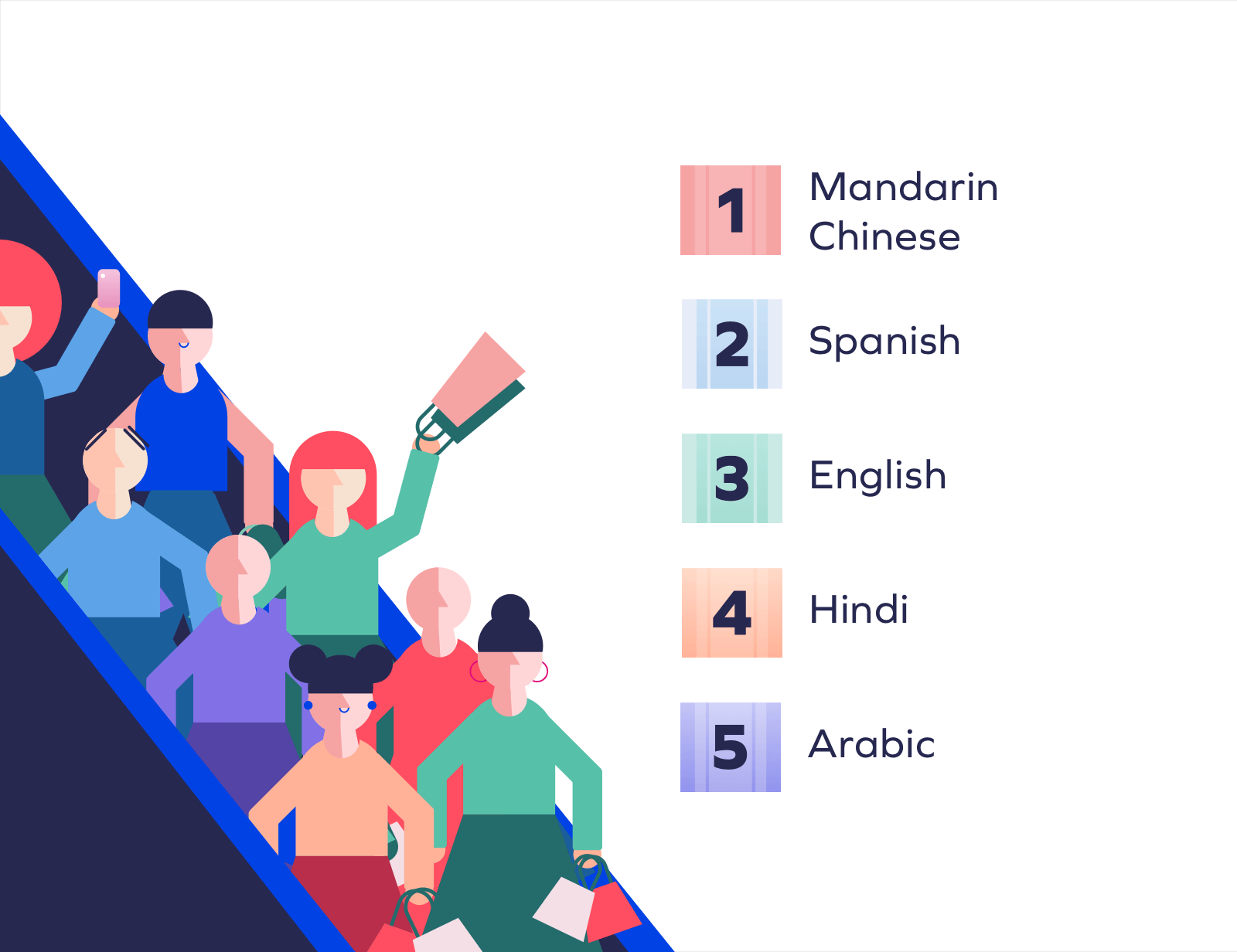Translate your eCommerce store to reach new audiences
Consider these stats:
- 65% of consumers worldwide prefer content in their own language
- 40% of consumers will not buy from an eCommerce site that isn’t in their native language
If you’re getting website visitors from other countries — or plan to expand — it’s not enough to rely on Google Translate. It’s important to ensure that all of your customers have a frictionless experience, regardless of where they are or what language they speak. In this chapter, we’ll take you through the benefits of localization, and how to incorporate it into your business.
If you want to take your eCommerce store global, there are two questions you need to ask yourself:
Which languages should I translate?
If you are planning on entering an already-defined market, this is an easy question to answer. If you want to generally grow your eCommerce business, it’s a little trickier.
The first thing you should do is look at where your existing sales are coming from. If you have a significant amount of sales from one or more markets where English isn’t the native language, that’s a good place to start.
If most of your sales are from your existing markets, then it might be worth considering the most popular languages in the world. When tallied based on native speakers, these are the five top languages:
- Mandarin Chinese
- Spanish
- English
- Hindi
- Arabic

If you think you can sell your products in countries that speak those languages, it’s worth investing some time and money into translation.
Who will do the translation?
Tools like Weglot make it easy to translate your store into any language and remove the need for multiple websites. By using a first layer of machine translation for efficiency, you then have the option to make manual edits by adding your own native translator or inviting teammates to perfect the translations where needed.
Often product pages and descriptions need little to no manual editing which means you can launch a multilingual store in days not months. Of course, every language has its nuances that only native speakers know, and you might want to capture those nuances in your translation for your important pages, such as your homepage and your checkout process.
Website translation solutions also make the process of uploading new content much more user-friendly as any new pages you create (such as new product launches) are translated and displayed instantly, removing the burden of manual uploading.
When choosing a translation tool for your website, you want to make sure that it integrates with your existing technology for a more seamless end-to-end experience.
How two brands grew online sales with translation
French eyewear brand Jimmy Fairly and Dutch lifestyle clothing brand La Machine Cycle Club both implemented Weglot on their stores to boost international sales. Here’s why they did it, and what the results were.
Jimmy Fairly
When Jimmy Fairly realized that 19% of their sales were coming from abroad, they knew that they needed to expand beyond the French language. They needed a solution that would simplify the purchasing experience for foreign visitors, but also one that was flexible and could adapt to their expanding product portfolio.
After integrating Weglot into their store, their website traffic increased by 70%, and their international conversion rate was 6x higher. Their multilingual website has been a huge lever in stimulating their international sales growth.

La Machine Cycle Club
When La Machine Cycle Club launched their store, they immediately began receiving orders from bike enthusiasts all over the world. They knew they needed to have a site in multiple languages, and it had to happen fast.
The brand used Weglot to translate their site into English, German, and Dutch. Their percentage of sales from outside the Netherlands quickly grew to 50%, and they had an overall conversion boost of 25%.
By incorporating translation into their online stores, these two brands were able to achieve huge growth in international sales. And they did it in a simple, streamlined way.
Localization beyond translation
Translation is probably the most important aspect when it comes to localization, but it’s not the only one. There are a few other factors you should consider if you want to deliver your customers an experience that feels truly local.
Educate yourself about local laws and regulations
When selling in new markets, it’s important to be aware of property laws, tariffs, quotas, language requirements, network parameters, and any forced data localization. Otherwise, you could end up inadvertently running afoul of the law or creating a situation where a customer has a bad purchase experience.
The impact of localization on UX
Words are different lengths in different languages, and that can impact the layout of your product pages. Make sure your pages look good in every language that’s important to you, and adjust where necessary. This is where a well-designed theme, allowing different title lengths and adapting to right-to-left languages, will be most important.
You also want to make sure that the landing page a user is served is the right one. That means they shouldn’t have to select a language; their default should be their web browser language. That page should also include their local currency, and you should keep in mind that images should be tailored to different cultures and beliefs depending on their location.
Local customs and culture
If you want to have a significant presence in another market, you’re going to need to do marketing and advertising. And that’s more complicated than translating product pages; you need nuance and effective messaging. This is where you might need to invest in hiring someone who lives in that market.
Localization can take your brand from a successful company to a successful global company. You just need to ensure you know enough about the markets you’re entering to ensure you’re following the rules and maintaining sensitivity.
What you need to know about localized SEO
If you’re an eCommerce brand, you already know how important SEO is for bringing traffic to your store. Well, it’s just as important in other markets, but simply translating your site isn’t going to get you ranked. Here are the top three things you need to do for great international SEO.
Multilingual keyword research
The keywords on your English site won’t be the same as those on your Mandarin one. In fact, the search engines you research won’t even be the same. For example, Baidu is China’s search engine of choice. Investing time and resources in searching for and creating content around keywords for any market that’s important for your business is crucial.
Metadata translation
Your metadata is important for getting users to click from search results, and a good title and meta description in English may not be the same as one in Spanish. Pay attention to your metadata, and update it if you can make it more localized.
URL structure
You don’t have to register every country-specific domain for your website, but if you want search engines to understand how your website is structured, you do need to identify the languages in your URLs. This can be either as a subdomain (de.example.com) or a subdirectory (example.com/de/).
You also need to clearly explain to search engines that a specific page can be found in different languages and/or for different locales. That’s what hreflang tags are for. A good website localization solution will help you automatically add these tags to allow search engine bots to index all your translated pages properly and not consider them as duplicated content.
Conclusion
Localization can help your brand expand to new markets or grow your customer base in an existing one. Using an automated website translation tool that combines machine, manual, and human translation, means you’ll be investing in success.




















 Join a free demo, personalized to fit your needs
Join a free demo, personalized to fit your needs